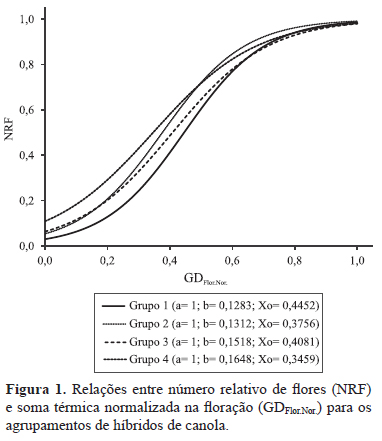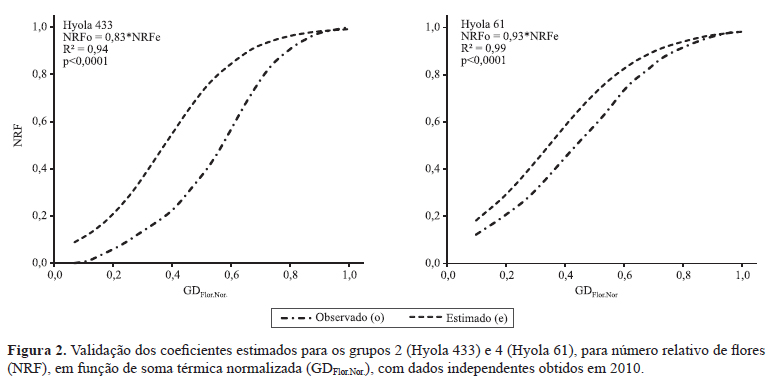The objective of this work was to evaluate the floral dynamics and to determine the index of flower abortion in canola (Brassica napus) and Indian mustard (Brassica juncea) hybrids, as well as to determine their relation with meteorological conditions of southern Brazil. During flowering, ten hybrids of canola and two of Indian mustard were evaluated every three days as to the number of open flowers, pods, and aborted flowers. The cumulative and the relative number of flowers were used to evaluate floral dynamics. The relation of these numbers with the accumulated thermal sum during flowering was determined with a logistic model. Groups of genotypes with different flowering rates were identified using the model coefficients. Flower abortion among hybrids ranged from 10.53 to 45.96% and was correlated with temperature and hydric demand of the atmosphere. Genotypes with larger thermal times between the peak and the end of flowering generally had higher percentages of flower abortion. The adjustment of data from flower emission to those of the thermal sum of the flowering period, using a logistic model, allows simulating floral dynamics of hybrids of canola and Indian mustard.
Brassica juncea; Brassica napus; natural dehiscence; thermal sum; relative humidity





